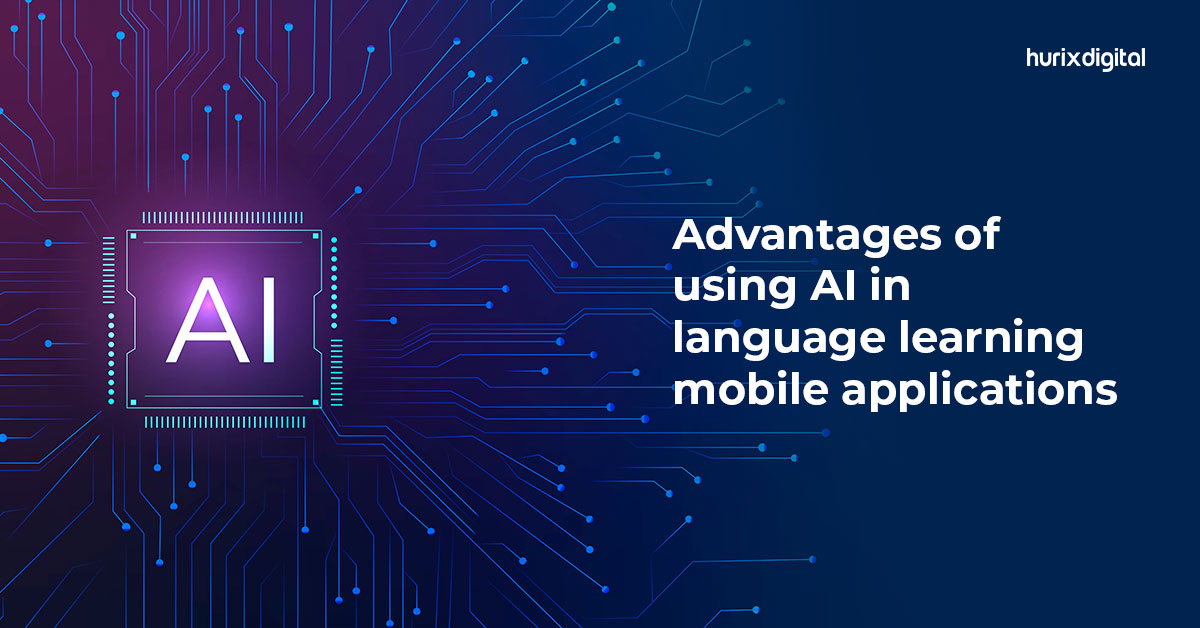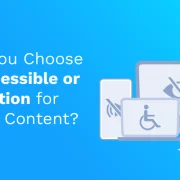
Top 6 Benefits of Using AI for Language Learning Apps
Summary
Discover the top six benefits of integrating AI for language learning apps, like personalized learning experiences, enhanced engagement, and improved language acquisition.
We live in a world where technology is rapidly transforming the way we learn languages. AI is experiencing exponential growth and will touch a surprising $1.3 trillion by 2030, up from a standing valuation of $214 billion.
As the world evolved with more complex applications, more advanced language learning AI applications have been developed. In this regard, AI will be a great game changer in the e-learning sector, changing the whole pedagogical process for the learner.
A Babbel survey found that 87% of users were satisfied with their language learning progress, crediting the app’s AI-powered personalized lessons. Let us explore the specific advantages of leveraging AI for language learning apps.
Table of Contents:
Advantages of Using AI for Language Learning Apps
The culmination of AI and language learning apps offers numerous benefits. Let’s explore them.
1. Adaptive Learning and Feedback
One of the most significant advantages of AI for language learning apps is its ability to tailor the learning experience to each user. By analyzing learners’ performance data, AI can adapt the course content and delivery in real-time to their difficulty level, unique needs, and learning styles.
For instance, an AI-powered language app might identify that a learner struggles with verb conjugations. The app might offer focused practice tasks, real-world examples, and visual assistance to support learning.
Furthermore, the app might modify the exercises’ difficulty in response to the learner’s performance, guaranteeing that they are continuously challenged without feeling overburdened. This individualized strategy maximizes students’ learning potential by ensuring they receive the optimal amount of challenge.
The AI language learning app can grade tests and evaluate essays automatically immediately after submitting them, showing errors and suggesting corrections, saving time for both students and instructors.
Also Read: Future-Proof Your Curriculum: Using AI in Education for Student Learning
2. Cost Efficiency
AI for language learning can be created once and then utilized by millions of students around the globe, significantly lowering the cost per user. This democratization of language learning allows people from various backgrounds to obtain a high-quality education, irrespective of location or financial situation.
AI-powered apps are constantly ready to meet learning demands, regardless of learning style—there are no more strict deadlines or time limits. Individuals can start a tailored language learning journey at their own pace with a smartphone and an internet connection. Students, working professionals, and others with erratic schedules would especially benefit from this flexibility.
3. Boosts Engagement
One significant advantage of AI and language learning apps driven by it is their ability to create a dynamic and engaging learning environment. AI can engage students and promote deeper comprehension by combining multimedia components like pictures, videos, and interactive exercises.
Additionally, gamification strategies like leaderboards, medals, and points can make learning a language enjoyable and competitive, inspiring students to persist and succeed.
AI for language learning can produce a more interesting and successful learning environment by comprehending learner motivations. For example, if a learner is especially driven by extrinsic rewards, the AI can provide incentives like badges, points, or virtual currency upon finishing particular tasks or hitting milestones.
Conversely, if the learner is intrinsically motivated, the AI can concentrate on offering chances for self-directed learning, problem-solving, and creative expression.
4. Up-to-Date Content
One of the greatest advantages of embedding AI into language learning applications is the delivery of consistently updated and relevant content. AI-driven systems can update learning materials automatically, ensuring students access the most recent vocabulary, grammatical rules, and linguistic trends.
This means students are constantly learning the latest material and eliminating the need for manual updating.
This dynamic approach protects students from halting their language development by keeping the learning process interesting and dynamic. AI also ensures a uniform educational experience for all students.
Students in urban and rural locations have access to the same top-notch education and materials. This standardization is crucial for tracking progress and maintaining a structured and effective learning path, regardless of individual circumstances.
5. Scalability
AI-powered solutions can manage several students simultaneously, guaranteeing each person a reliable and excellent educational experience. Because it makes scalability possible, language-learning applications can support a high user volume without sacrificing quality.
AI systems are also capable of analyzing enormous volumes of data to customize learning resources to individual student’s requirements and tastes.
For instance, AI for language learning can dynamically modify the curriculum to include pertinent terminology and real-world scenarios if a student shows interest in a certain subject, such as technology, improving the learning process overall.
This is crucial for institutions that aim to provide language learning opportunities to a broad audience.
6. Support for Educators
Language bots can analyze learners’ written and spoken responses, identify errors, and offer targeted corrections. This immediate feedback loop accelerates learning and helps learners refine their skills efficiently.
Additionally, language bots driven by AI can adjust to the unique requirements and preferences of every learner. These bots may adjust their training to be as effective as possible by examining their students’ learning styles, strengths, and shortcomings.
They can serve as teaching aids in the classroom by offering pronunciation and language translation support in real-time, which is especially useful in classes with a varied student body.
Another significant benefit of AI-powered language learning applications is the ability to practice language skills in a conversational and natural environment. By simulating real-world conversations, language bots enable students to participate in discussions, pose queries, and get genuine answers. This immersive experience helps learners gain confidence in their language skills and fluency.
Also Read: How AI Tailors Personalized Learning Experiences for Students and Teachers?
The Bottom Line
The merger of AI and language learning is revolutionizing how we acquire new languages. From personalized learning experiences to enhanced engagement and streamlined educator support, AI is making language acquisition more accessible and effective.
AI in education has limitless potential as technology develops. It offers increasingly creative answers to the problems associated with language acquisition. Hurix Digital is at the forefront of this technological advancement, using AI to create innovative and effective language-learning solutions.
With years of experience in delivering eLearning solutions, our team has been able to offer intelligent solutions to the eLearning needs of universities and other corporate entities, schools, and institutions.
Experience the future of language learning with us as we guide you through the process of using AI for language learning.

SVP & Head – Hurix Technology Solutions
Global Delivery head with 25 years of working experience in NYC investment banks and fintech companies. Hands-on technology delivery management and program management, accountable for stakeholder relationships, Strategic roadmap, P&L, Revenue growth, Account Management, and employee satisfaction.



